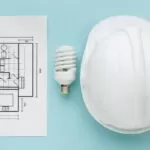As a business owner in Texas, the importance of efficient lighting design cannot be overstated. Not only does it contribute to cost savings, but it also plays a crucial role in reducing environmental impact. In this guide, we will explore the significance of efficient lighting design for building owners in Texas and provide practical steps to implement sustainable lighting solutions.
Table of Contents
The Impact of Lighting on Business Operations
Enhancing Visibility and Productivity
Efficient lighting is a cornerstone for optimal business operations. Adequate illumination enhances visibility in workspaces, reducing the likelihood of errors and accidents. Employees benefit from a well-lit environment that promotes focus and productivity. Suboptimal lighting, on the other hand, can lead to eye strain and fatigue, negatively impacting the overall efficiency of your business.
Cost Savings through Energy Efficiency
One of the primary motivations for embracing efficient lighting design is the potential for significant cost savings. Energy-efficient lighting systems consume less electricity, resulting in lower utility bills for building owners. In Texas, where energy costs can be substantial, implementing sustainable lighting solutions is a practical and financially savvy decision.
Environmental Responsibility
Beyond financial considerations, efficient lighting design aligns with environmental sustainability goals. Reduced energy consumption translates to a smaller carbon footprint, contributing to the overall well-being of the planet. As businesses across Texas increasingly prioritize corporate social responsibility, implementing eco-friendly lighting solutions becomes a tangible way to demonstrate commitment to environmental stewardship.
Sustainable Lighting Technologies
LED Lighting: An Energy-Efficient Choice
Light Emitting Diode (LED) lighting has emerged as a frontrunner in energy-efficient lighting solutions. LEDs use significantly less energy than traditional incandescent or fluorescent bulbs, making them a cost-effective option for long-term use. Moreover, LEDs have a longer lifespan, reducing the frequency of replacements and associated maintenance costs.
Smart Lighting Systems for Customization
Smart lighting systems offer a level of customization that goes beyond traditional lighting controls. Building owners in Texas can leverage advanced technologies to adjust lighting levels based on occupancy, time of day, or natural light availability. This not only enhances energy efficiency but also provides a tailored lighting experience that meets the specific needs of different areas within a building.
Daylight Harvesting: Harnessing Natural Light
Texas is known for its abundant sunlight, and building owners can harness this natural resource through a technique known as daylight harvesting. This involves strategically placing windows, skylights, or light shelves to maximize the use of natural light. By integrating daylight into your lighting design, you can reduce reliance on artificial lighting during daylight hours, further lowering energy consumption.

Implementing Efficient Lighting Design in Texas
Conducting a Lighting Audit
Before implementing any changes, it is essential to conduct a comprehensive lighting audit. This involves assessing the current lighting system, identifying inefficiencies, and understanding the specific lighting needs of different areas within your building. A lighting audit provides valuable insights that guide the development of a tailored and effective lighting design.
Upgrading Fixtures and Bulbs
Once the audit is complete, consider upgrading fixtures and bulbs to more energy-efficient options. Replace outdated incandescent or fluorescent bulbs with LED alternatives. Upgrading fixtures to those designed for optimal light distribution ensures that the entire space is adequately illuminated, minimizing dark corners and improving overall visibility.
Implementing Lighting Controls
Installing lighting controls is a key element of efficient lighting design. Occupancy sensors, timers, and dimmer switches enable precise control over lighting levels, ensuring that lights are only in use when needed. This not only conserves energy but also extends the lifespan of bulbs, contributing to long-term cost savings for building owners in Texas.
Employee Engagement and Education
Efficient lighting design is a collaborative effort that requires the support and engagement of employees. Educate your staff about the benefits of sustainable lighting practices and encourage them to play an active role in energy conservation. Simple habits, such as turning off lights when not needed, can significantly contribute to overall energy efficiency.
Overcoming Challenges in Implementation
Initial Investment vs. Long-Term Savings
While upgrading to energy-efficient lighting may require an initial investment, it is crucial to view it as a long-term strategy for cost savings. The higher upfront costs of LED bulbs and smart lighting systems are outweighed by the significant reduction in energy consumption and maintenance expenses over time. Building owners should consider the return on investment and the positive impact on their bottom line.
Addressing Resistance to Change
Resistance to change is a common challenge when implementing new lighting systems. Employees may be accustomed to the existing lighting setup and resist adjustments. Effective communication about the benefits of the changes, coupled with training on how to use new lighting controls, can help alleviate concerns and foster a positive attitude towards the transition.
Conclusion
In conclusion, efficient lighting design is not just a buzzword but a practical and essential consideration for business owners in Texas. From enhancing visibility and productivity to achieving cost savings and environmental responsibility, the benefits are tangible and far-reaching. By embracing sustainable lighting technologies and implementing thoughtful design strategies, building owners can create well-lit, energy-efficient spaces that contribute to the success of their businesses while making a positive impact on the environment. Remember, the switch to efficient lighting is not just a smart business decision; it’s a commitment to a brighter, more sustainable future for Texas and beyond.




